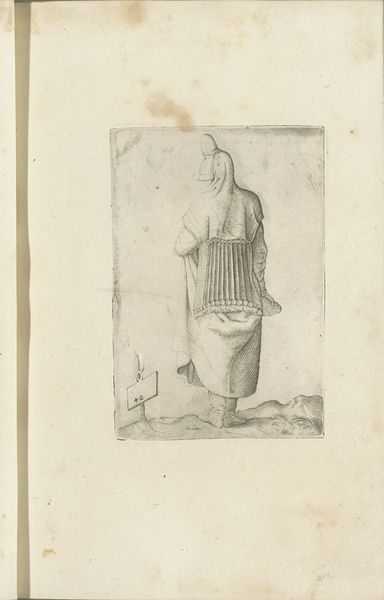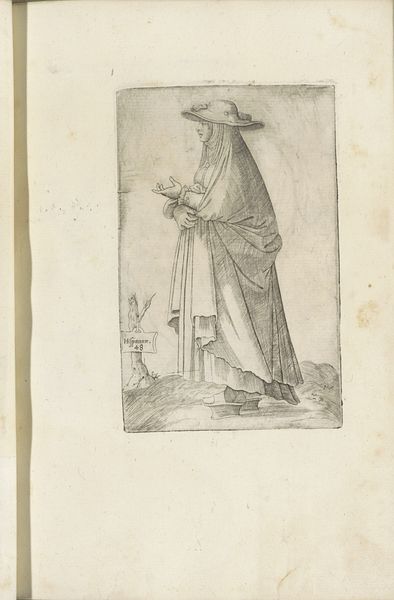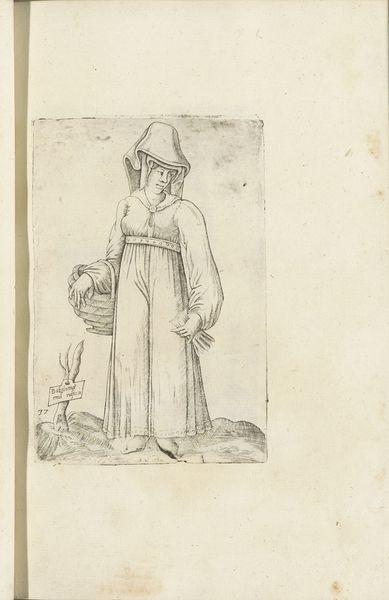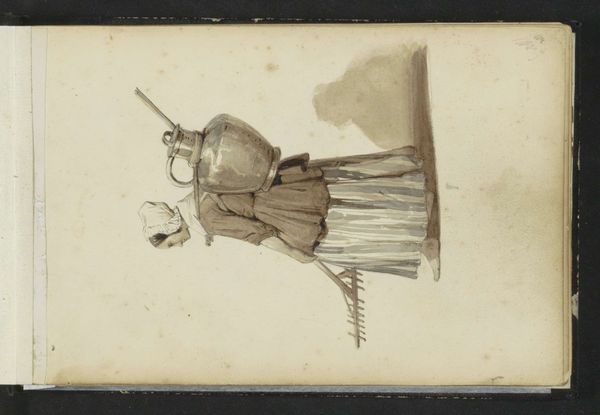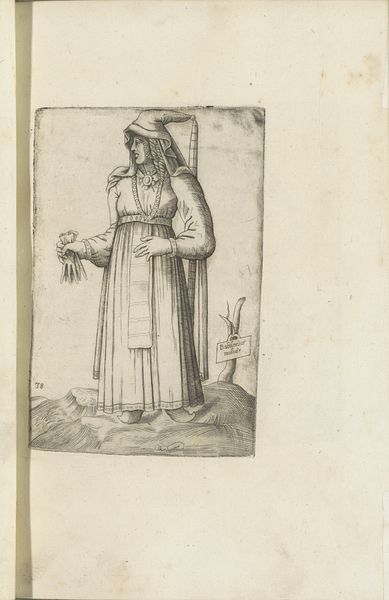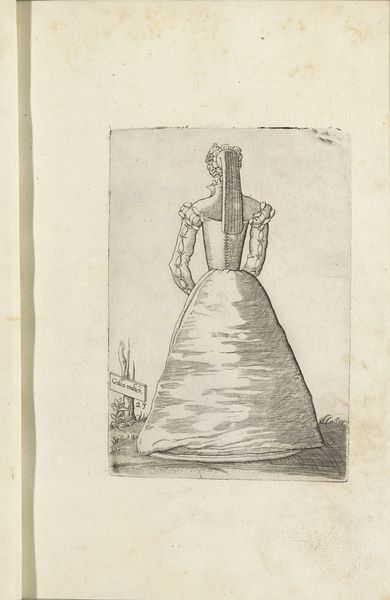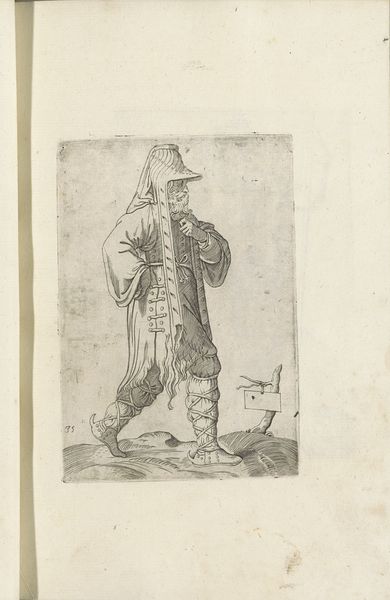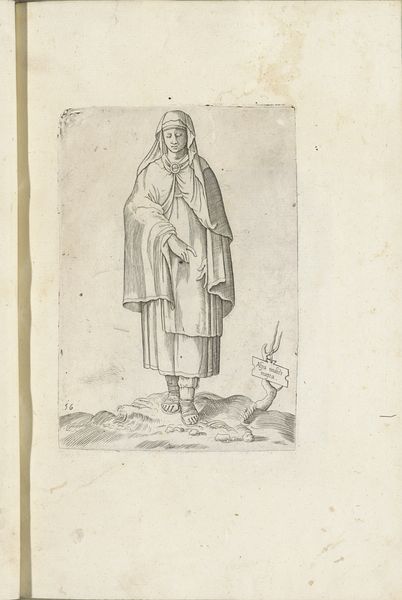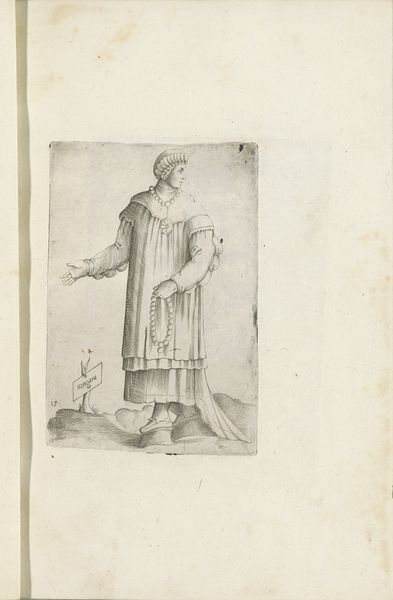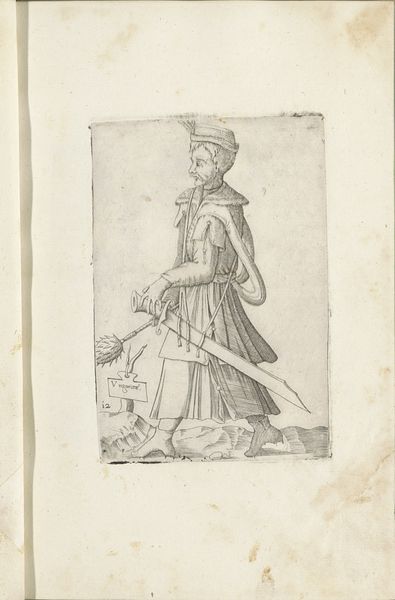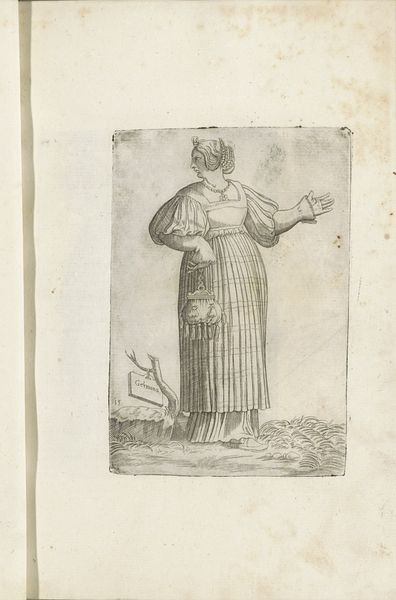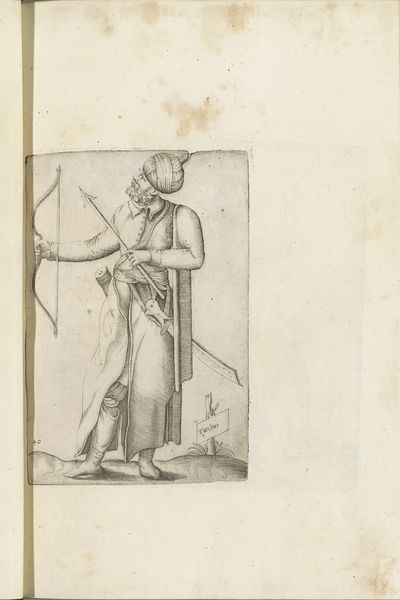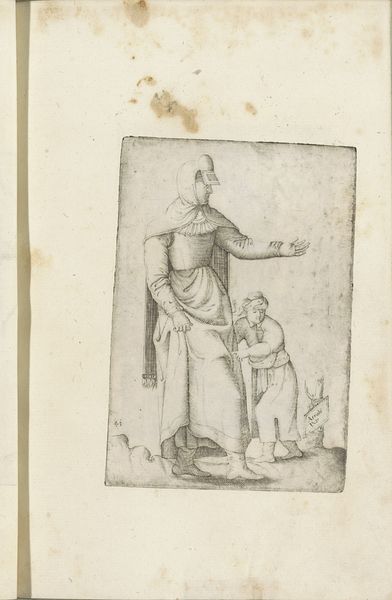
drawing, paper, pencil
#
portrait
#
pencil drawn
#
drawing
#
pencil sketch
#
figuration
#
paper
#
11_renaissance
#
pencil
#
italian-renaissance
Dimensions: height 265 mm, width 195 mm, height 150 mm, width 105 mm
Copyright: Rijks Museum: Open Domain
Curator: This sketch is titled "Woman Seen From the Back," attributed to Ferando Bertelli, created around 1569. It is part of the Rijksmuseum's collection. An Italian Renaissance drawing in pencil on paper. Editor: There's a strange vulnerability to this piece. Her face is hidden, yet somehow you sense this burden—almost literally with the yoke across her shoulders. I imagine it weighing her down in subtle, visual poetry. Curator: Interesting point. Consider how depictions of women functioned during the Renaissance. Female figures, especially in more quotidian scenes like this one, were rarely given individual identities. They symbolized broader social roles, the silent worker, burdened yes, but also foundational to societal structure. The yoke could symbolize her labor, the expectation placed upon women. Editor: Right, and that weight also echoes the limitations placed on their visibility—literally and figuratively. She's walking away, out of sight. It raises so many questions about her internal life, and her agency. She has a basket in her right hand but the other hand is point toward what seems a signpost of some sort. Curator: Yes, there is that small rectangle there on the lower left... possibly a crude attempt at a map, maybe indicating trade routes that connect this woman, or others like her, to a wider marketplace, or other exchanges within society that aren't initially very obvious? The artist emphasizes shadow and line to delineate texture within the heavy dress that covers her entire body and head, also obscuring individual features. Editor: I see that. I love how the rough sketch adds another layer to this discussion. The quick strokes and simple presentation also seem very contemporary. It prompts thoughts about our fleeting glimpses into lives outside our own and our assumptions about this. Curator: Perhaps a good reminder to be very aware of the underlying socio-historical assumptions we carry ourselves. That in any work of art, no matter how seemingly simple or straightforward, exists a complex dialogue with its own time, and maybe, in our interpreting it, of our own assumptions and expectations about gender, power and so much more. Editor: Precisely. Leaving you pondering what other Renaissance woman’s stories remain unheard.
Comments
No comments
Be the first to comment and join the conversation on the ultimate creative platform.
